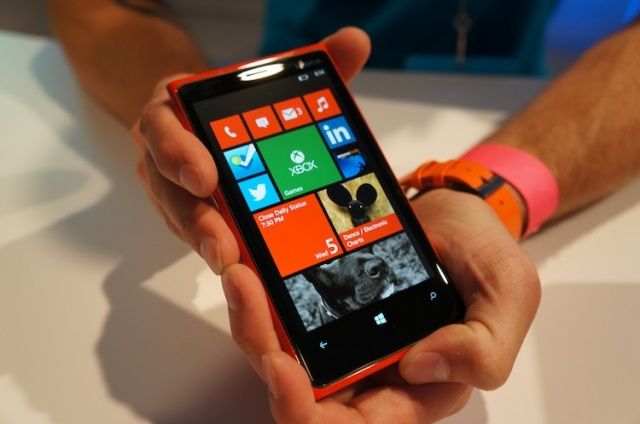Microsoft gathered the press in San Francisco today to unveil Windows Phone 8, the next major iteration of its mobile platform. At today’s Windows Phone Summit, Steve Ballmer and co. unveiled the new operating system and all of its improvements. Initial reactions and early reviews are calling Windows Phone 8 a great update, but Microsoft still has a lot of catching up to do before it joins the ranks of Google and Apple in the smartphone space.
“Windows Phone 8 may finally be the third horse in the race against iPhone and Android”
Windows Phone 7 (WP7) was a clear departure from the status quo back in 2010, and the look and feel of Microsoft’s Metro interface somehow still feels fresh today. It’s almost impossible to compare Windows Phone 8 (WP8) and iOS 6—the two are that different in scope. One thing you have to credit Microsoft for is originality. In the midst of the Apple vs. Samsung patent saga, the guys in Redmond are doing something different. WP8 has basically the same look and feel as its predecessor, but Microsoft has beefed things up under the hood. The most notable improvement is that WP8 runs on the same kernel that powers Windows 8 on the desktop, meaning more power.
Microsoft had weak hardware requirements for WP7, but specs have been upgraded across the board this time around, including the addition of NFC for mobile payments. Manufacturers like Samsung, HTC and Nokia have partnered with Microsoft to rollout WP8 in Europe and the United States during the next month. Pricing should be set competitively with flagship Android devices and, of course, the iPhone.
Now that rigamortis has started to set in for RIM and Blackberry, WP8 may finally be the third horse in the race against iPhone and Android. Microsoft still needs to get developers on board to create apps and a vibrant ecosystem, but the hardware and software looks like it’s getting there. WP8 isn’t a real threat to the iPhone and iOS 6, but it’s the most solid third choice out there right now.
Here are some early reviews:
The Verge believes that Microsoft still has a huge gap to overcome with Windows Phone:
With each new generation of Windows Phone, Microsoft not only closes the gap with iOS and Android in important ways, but it also differentiates in important ways — and that might be more true in version 8 than ever before. But at the risk of sounding like a broken record, there are still countless annoyances that trace back to 7.5 or even 7: the status bar that only occasionally appears (who doesn’t want to see time, battery, and signal strength at all times?). The attractive animations and screen transitions that can turn into annoyances and time-wasters after you’ve seen them 50 times. The lack of a unified notifications tray. The fact that the hardware search button isn’t contextual (and often appears alongside an on-screen search button that is contextual). The “Resuming…” animation when loading an app back up. And speaking of apps, just today, I pined for Uber, United, and a real first-party Starbucks app. There’s still a big app gap between Windows Phone and its competitors — don’t let anyone tell you otherwise.
PCMag is optimistic about the future of Microsoft’s mobile presence:
Windows Phone 8 is elegant, personable, and different. It absolutely shines for those who use their smartphones for a lot of calling, texting, and Facebooking, and especially people who connect to Microsoft anything—whether that’s Outlook, Hotmail, Exchange, Skydrive, Office 365, or Xbox. If iOS bores you and Android intimidates you, Windows Phone will likely dazzle you.
But pick up a Windows Phone 8, and you’ll be a maverick. There’s significantly less of a selection of apps here than for Android and iOS, and the apps are different. The odds are good that you’ll find what you need, but the goods are odd. That makes a Windows Phone less of an easy purchase than it could be.
Engadget wants to see more developer engagement:
There’s only one major question mark still looming over its head now; how will developers respond to it? In 2012, an OS is only as strong as its ecosystem, and regardless of Microsoft’s best efforts to sell the platform to big-name developers (and even amassing over 100,000 apps to date), it’s been an ongoing struggle for Windows Phone to appear relevant enough to attract popular titles. What the new firmware has, however, is much more potential than WP7 ever had; Microsoft has finally laid the proper framework to make the platform desirable to developers. We’ll also likely see a large number of Windows 8 customers eventually drawn to Microsoft’s phone OS as they begin investing time and money in the desktop or tablet versions.
Let there be no doubt — Windows Phone 8 is a definite improvement over its predecessor, and it’s long overdue. In general, we like what we see, and users and developers have been eagerly awaiting this update ever since the Windows Phone platform first launched. It’s still far from perfect, but Microsoft has finally caught up in many ways to its competitors (and come up with some clever new features in the process), and by doing so, the momentum is now in its court. If Microsoft loses that momentum in the near future, however, we have a hard time seeing its OS recovering from it.
Image: PhoneDog


